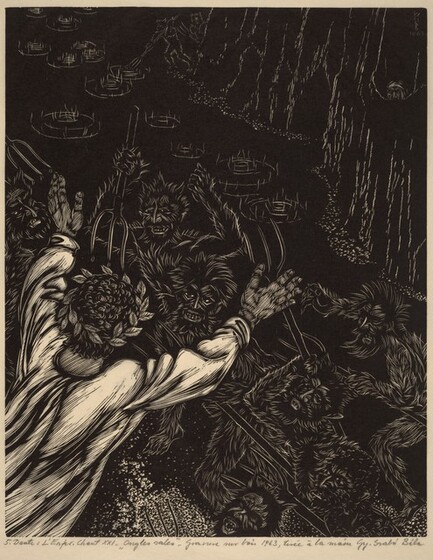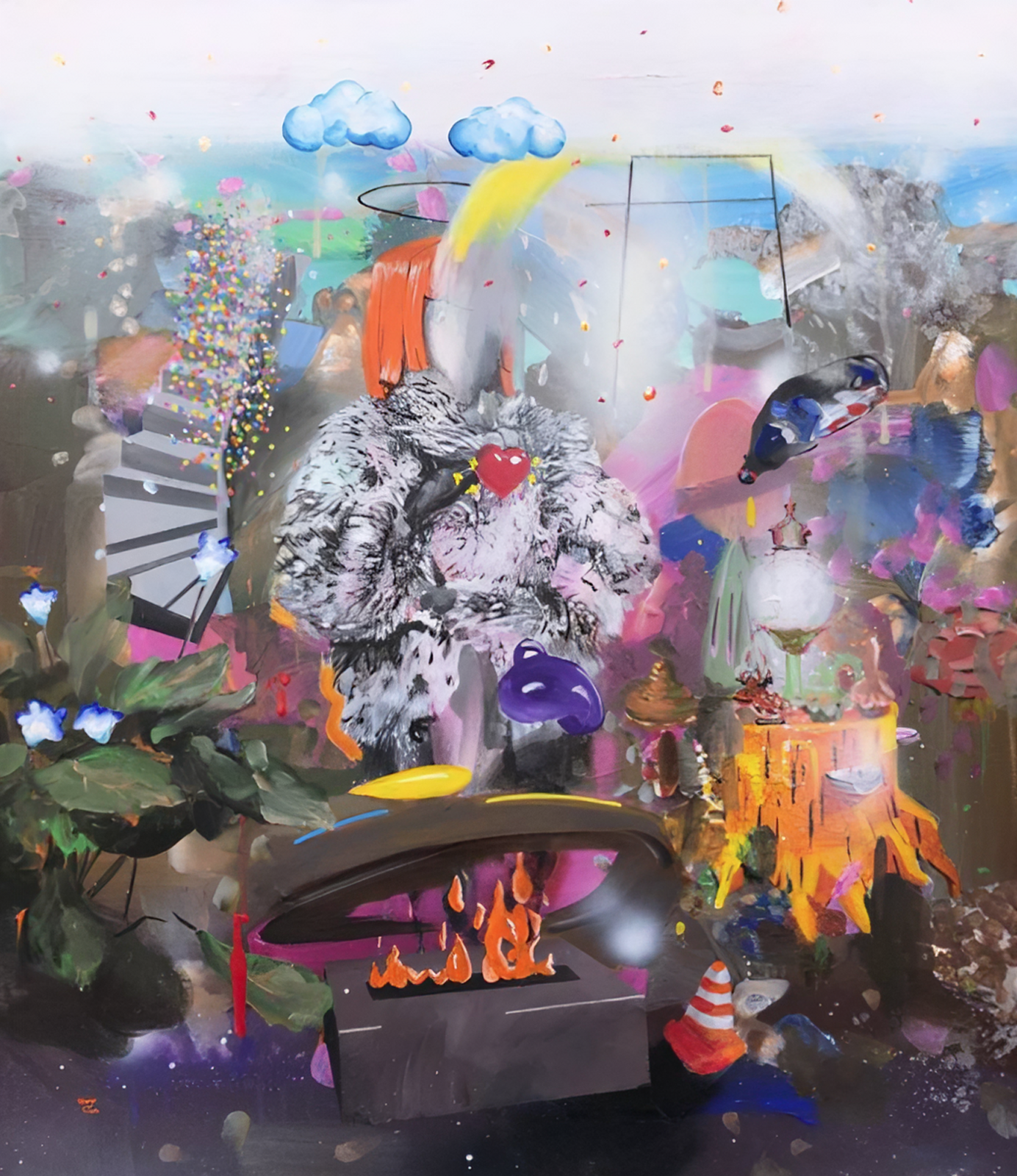Romanian artist Gy Szabo Bela (1905-1985) portrayed with “hand printed wood engraving on Japanese paper” a depiction of Dante’s Inferno, called Dante: L’enfer, Chant XXI, Ongles sales (Dante’s Inferno, Canto XXI, Nasty Claws, 1963). — “Dante: L’enfer, Chant XXI, Ongles sales (Dante’s Inferno, Canto XXI, Nasty Claws), 1963,” National Gallery of Art
Edith Torony, Love that Moves the Sun and Other Stars (2019 painting)
“My works are earthly, starting with Junkyard Symphony, an approach related to the exterior, ground and waste. The space is increasingly populated by ordinary or current objects, but also by characters, I am trying to maintain a playful manner through representation and recomposition. It passes into another register, the interior, the desires, the lust. but keeping the same horizontal plane. So this is how the personal mythologies were born, with sincerity, boredom, suffering, desires, or guilty pleasures. Beginning with Toxic Desire, I’m more interested in distinguishing my subjectivity and individual development. All the works were shaped around personal experiences. From the representations of the bad choices we make through our superficiality and a hedonistic living, to the assumption of this flat existence. We are captive in a sort of limbo of desires. And on this realm I build my works, as a sequential reinterpretation of Hieronymus Bosch’s Garden of Earthly Delights.” –Edith Torony, “Love that Moves the Sun and Other Stars”, Saatchi Art, 2019
The Death of Mr. Lazarescu (2005, dir. by Cristi Puiu)
 “Set in Bucharest, Romania, an ailing old man is carried by an ambulance from hospital to hospital during one night, while doctors refuse to treat
“Set in Bucharest, Romania, an ailing old man is carried by an ambulance from hospital to hospital during one night, while doctors refuse to treat
him. The ever-worsening journey of Mr Lazarescu, whose first name is Dante becomes a descent into the Underworld of Romania’s medical
services. Echoes to Dante abound.” — Contributor Cristian Ispir
“The Death of Mr. Lazarescu is the first instalment in a projected series of ‘Six Stories from the Bucharest Suburbs’. Puiu cites Eric Rohmer’s Moral Tales as his chief inspiration, but on this evidence an equally telling parallel would be Krzysztof Kieslowski’s Dekalog, though Puiu is more inclined towards self-conscious symbolism than the Pole. There are characters called Dante and Virgil and an unseen Dr Anghel, and the various hospital trips and their cyclical routines would match anyone’s idea of hell. And although the film’s title and mounting medical evidence suggests the opposite, Lazarescu’s own name hints that some kind of miraculous resurrection might be in prospect. It’s not just the film’s ambiguous ending that supports this, but also Fiscuteanu’s uncannily convincing portrayal of a man increasingly aware that he’s crossing the bridge between life and death but fiercely determined not to go without a fight, even as his faculties betray him. If Puiu’s main theme is the absence of love, his film is ultimately about the love of life.” — Review by Michael Brooke for the British Film Institute’s Sight & Sound magazine
Contributed by Cristian Ispir (University College London/Université de Lorraine)
The Nine Circles of Hell, as Depicted in LEGO (2012)
“Here’s a series of play sets that won’t be debuting in the toy aisle anytime soon. Sculptor Mihai Mihu has built this fantastic and creepy nine-part collection of LEGO dioramas based on Dante Alighieri’s Inferno. Witness the Divine Comedy depicted in tiny plastic bricks, from the River Styx to the frozen head of Satan.” [. . .] –Cyriaque Lamar, io9, May 12, 2012
Contributed by Carol Chiodo
See also:
The Telegraph, August 17, 2013 (note that in slide 10, the artist says that he knew the structure of Dante’s vision of hell, but that he didn’t read the Commedia, because he wanted to imagine his own version of punishments for each given sin/s)
Contributed by Leslie Morgan



